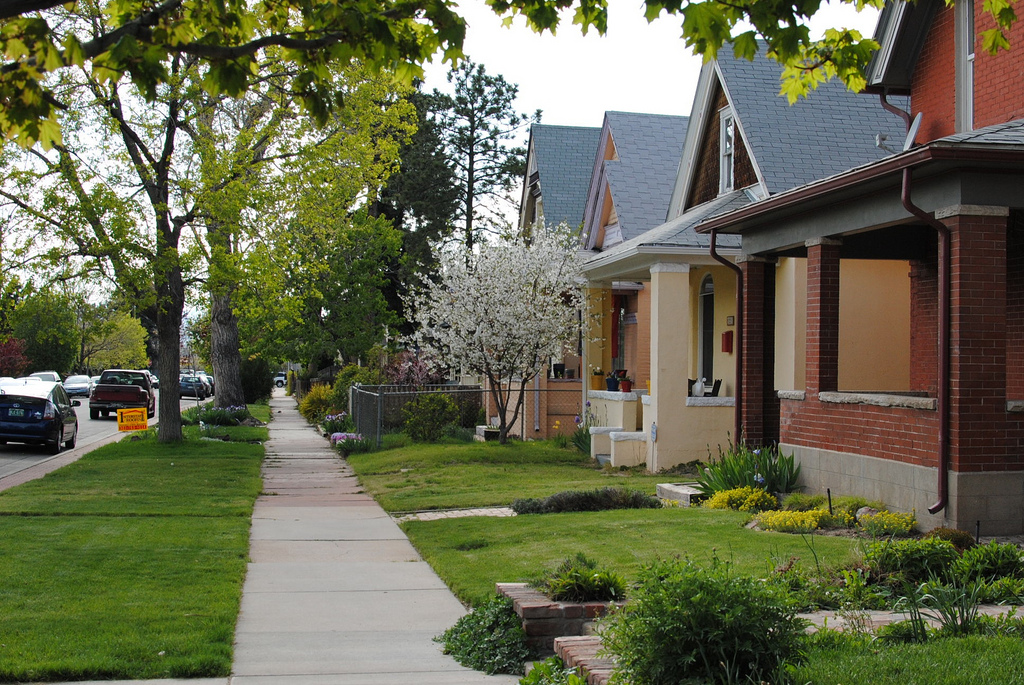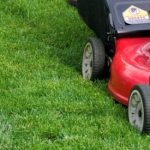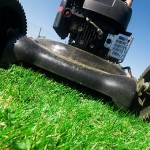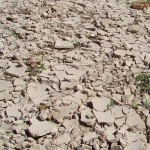
5 Eco-friendly Lawn Care Tips for Denver, CO Homeowners
Who doesn’t love looking outside their window and seeing their children just being kids as they horse around, doing cartwheels on a well-manicured, luscious green lawn? After all, being outdoors is what being from Denver, Colorado is all about! Seeing your children worshiping the land just as you did when you were their age is what turns a house into a home. You would do anything to frame that picture-esque moment in time.
Photo: Flickr / Michael LaMartin
A beautiful lawn is a strong backdrop for the memories of our children that we create in our minds. We go to great lengths to keep the colors alive in our snapshots. That includes giving our lawns water and nutrients, manicuring it, and protecting it from pests. However, we may be doing so at the detriment to our environment. The same successful regimens we have been following may work for our lawn now, but it may be tapping nature’s resources and contaminating our eco-system. Follow these tips to ensure that our grandchildren and future generations can roll around on the same green grass we have always loved.
1. Plant Cool-Season Grass
It is important to plant grass that is meant to thrive in your environment. For residents of Denver, we are looking at cool-season grasses. This will enable you not to waste resources on a grass that never really stood the chance to flourish. The most prominent of these grass types in Colorado is Kentucky bluegrass. Not only is Kentucky bluegrass beautiful, but it can withstand cold weather and is pretty tolerant of the common Colorado drought. However, Kentucky bluegrass also forms thatch and are disease and insect prone.
The other two common types of cool-season grass in Denver are ryegrass and fescues. Like Kentucky bluegrass they are both pretty drought resistant but also have the pitfalls of being susceptible to disease and insects. If you are looking for an alternative to Kentucky bluegrass, ryegrass uses less water than the other two, but also forms thatch. While it may use a little more water, fescues are not prone to thatch. So, pick which grass works best for your needs, as long as it is cool-season grass.
2. Use Mulch and Compost
Photo: Flickr / normanack
Like any living organism, grass needs nutrients in order to grow. Who would have thought?! A great, cost-effective way to ensure the health of your soil is to create a compost pile. Instead of having food scraps clogging up landfills, create a compost pile about six inches into the soil. Just make sure the food is organic! You don’t want to put harmful pesticides into soil you are trying to enrich.
Another waste-free way to strengthen your soil is to use your grass clippings. Grass clippings are 90 percent water and provide 25 percent of the fertilizer necessary to maintain a beautiful lawn. Not only is this eco-friendly but cost effective. Most lawn mowers mulch as you mow. However, if that option is not available for you, then bag up your clippings and empty them out onto your lawn.
3. Conserve Water
Photo: Flickr / Evelyn Berg
Water is necessary for all living things. However, there is such thing as too much of a good thing. As we all have learned through Denver’s water restrictions, water is becoming an increasing scarcity in the west. Placing rain barrels under gutter spouts is a great way to recycle Mother Nature’s natural resources. Oh, and it’s free! Just be sure the rain barrel is raised above the grass you want to water, hook up a hose to the spout, and let gravity do it’s thing!
Mindfulness of water usage is pivotal for the preservation of our reservoirs. Not to mention over-watering your grass won’t turn it into the vibrant shade of green that has you longing. Microorganisms in the soil need to digest and create waste in order to keep the soil rich. In order to perform these tasks, it is essential that microorganisms have access to air. Over-watering compacts the soil, closing off all opportunities for microorganisms to breathe. In essence, too much water does not allow the microorganisms to complete the cycle necessary to provide your soil with essential nutrients.
As another water saving-measure, be sure to water your lawn in the morning. Especially in Denver, watering your lawn during those cooler morning hours allows the grass more time to soak in the nutrients, rather than having the water evaporate immediately in the hot afternoon sun.
Lastly, be sure to mow only when rain is in the upcoming forecast. This allows the disturbed soil to have open pockets that allow in the water. Waiting until rainfall let’s you keep those rain barrels full for use during potential droughts.
4. Use Biopesticides
Photo: Flickr / Tom Bayly
Our lawn is our property and as human beings we are naturally defensive of our property. We want to eliminate anything that is going to harm it. We are looking at you, insects!
However, not all insects are the enemy. After successfully wiping out mosquitoes in Africa who carried malaria, DDT rose to prominence in the 1940s as our pesticide of choice. That is until climate change effectively began melting the Arctic. Scientists have discovered DDT being re-released back into our ecosystem. This has led to changes in the reproductive system of butterflies, bees, birds, and other pollinators. Naturally, if these pesticides are unhealthy for the rest of the environment, it is most likely unhealthy for our pets, our children, and ourselves.
Don’t fret! There are alternatives to these dangerous chemicals. Microbial pesticides, such as Milky Spore, are an effective way of combating unwanted pests. Plant-eating grubs ingest the spores during their normal feeding processes. Bacteria grows inside the grub, and within 7-21 days, the pest is effectively killed with no harm to the ecosystem or your family.
5. Switch from Gas to Electric
Photo: Flickr / Jeffsimages
10 percent of air pollutants come from portable gas machines. That statistic includes our buddy, the lawn mower. On top of that, the EPA does not hold lawn mowers to the same standards as automobiles, so it is unknown just how dangerous are lawn mower’s emissions. The best solution to this problem is to ditch the gas for electric. Electric lawn mowers come both corded and battery-powered. The corded lawn mowers are typically stronger than the battery-powered, but are obviously less convenient. For larger yards, riding mowers also come cord-free. So you can ride around with even less guilt than you already do!
Now, you don’t need to run out and get a new lawn mower right away. Every little bit goes a long way in helping. If you keep your old gas mower, be sure to just mow less! Remove no more than a third of the grass’ original height. The longer the grass blades, the deeper they grow into the ground. As a blade gets ingrained further into the soil, the more resistant it becomes to drought and pests. Doesn’t that sound great? Stronger grass and less work for you!
Now that there’s less to do, get up, go outside, and roll around with your kids on your beautiful, green, eco-friendly lawn!
Have additional questions about lawn care? Visit our Denver, CO lawn care page or share your thoughts in the comments below.










